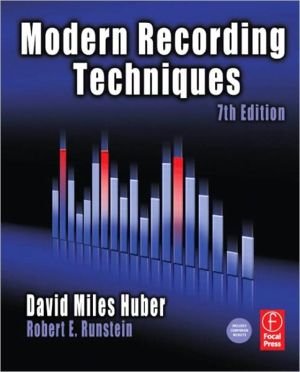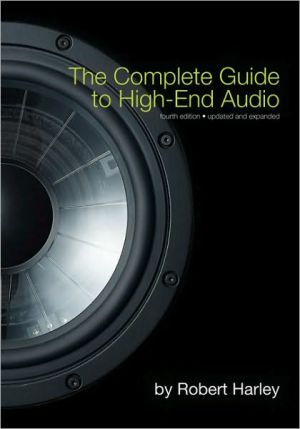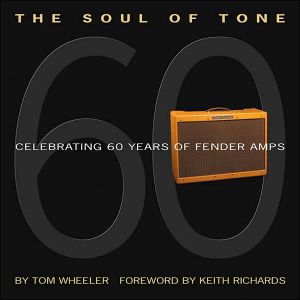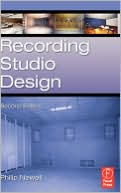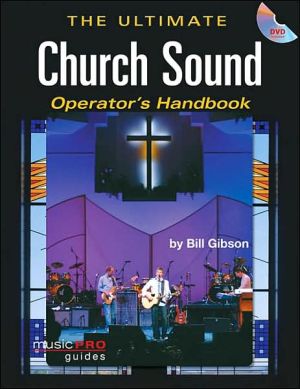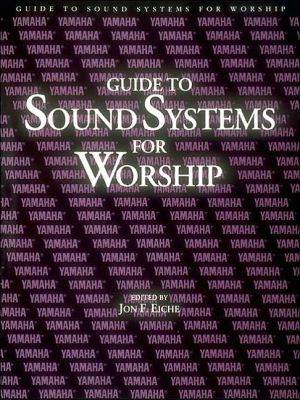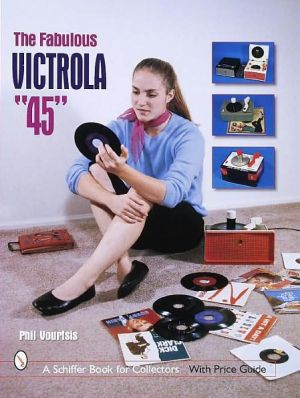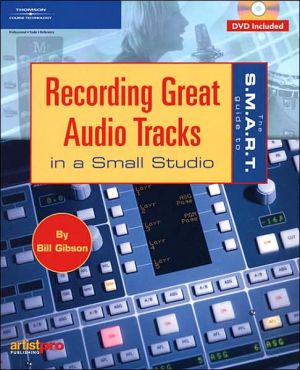Modern Recording Techniques
We have entered an exciting age in audio production. Conventional limitations in recording have subsided or vanished entirely, making it possible to create and record your own music in ways that few ever dreamed possible. This expanded, up-to-date edition of Modern Recording Techniques can help guide you through the process of creating, understanding and mastering the professional and project studio. The tips, tricks, and tools in this best-selling book will enable you to record music in new...
Search in google:
We have entered an exciting age in audio production. Conventional limitations in recording have subsided or vanished entirely, making it possible to create and record your own music in ways that few ever dreamed possible. This expanded, up-to-date edition of Modern Recording Techniques can help guide you through the process of creating, understanding and mastering the professional and project studio. The tips, tricks, and tools in this best-selling book will enable you to record music in new and innovative ways that’ll help you express your talents to their fullest potential.This definitive guide to audio covers the latest audio technologies, and includes expanded and enhanced sections on the Digital Audio Workstation (DAW), plug-ins, looping, groove tools, studio techniques, surround sound, mastering and more. Accompanied by an interactive companion website (www.modrec.com) featuring a searchable audio glossary, this dynamite book/website combination leaves no recording question unanswered, while offering you the chance to share ideas, get tips, and seek out advice when and where you need it. With Modern Recording Techniques, 7th ed., you can:* Explore the tools for getting better results in both the professional and project recording studio* Gain in-depth insights into digital audio technology, the digital audio workstation (DAW), surround sound production, electronic music and MIDI, synchronization, analog and digital console technology, mixing, console automation and more* Master the basics of dynamics, noise reduction, and other forms of signal processing in both the analog and the digital domains* Learn practical microphone placement techniques, monitoring fundamentals, CD mastering and important tips on getting your music to market* Check out new developments in new media, desktop audio and music technologies for the Web
Modern Recording Techniques\ \ By David Miles Huber Robert E. Runstein \ Focal Press\ Copyright © 2010 Elsevier Inc.\ All right reserved.\ ISBN: 978-0-08-092803-6 \ \ \ Chapter One\ Introduction \ The world of modern music and sound production is multifaceted. It's an exciting world of creative individuals: musicians, engineers, producers, manufacturers and businesspeople who are experts in such fields as music, acoustics, electronics, production, broadcast media, multimedia, marketing, graphics, law and the day-to-day workings of the business of music. The combined efforts of these talented people work together to create a single end product: marketable music. The process of turning a creative spark into a final product takes commitment, talent, a creative production team, a marketing strategy and, often, money. Over the history of recorded sound, the process of capturing music and transforming it into a marketable product has radically changed. In the past, the process of turning one's own music into a final product required the use of a commercial recording studio, which was (and still is) equipped with specialized equipment and professional staff. With the introduction of the large-scale integrated (LSI) circuit, mass production and mass marketing—three of the most powerful forces in the Information Age—another option has arrived on the scene: the radical idea that musicians, engineers and/or producers can have their own project studio. Along with this concept comes the realization that almost anyone can afford, construct and learn to master a personal audio production facility. In short, we're living in the midst of a techno-artistic revolution that puts more power, artistic control and knowledge directly into the hands of creative individuals from all walks of life.\ On the techno side, those who are new to the world of modern digital audio and multitrack production, musical instrument digital interface (MIDI), mixing, remixing and their production environments should be aware that years of dedicated practice are often required to develop the skills that are needed to successfully master the art and application of these technologies. A person new to the recording or project studio environment (Figures 1.1 through 1.3) might easily be awestruck by the amount and variety of equipment that's involved in the process; however, when we become familiar with the tools, toys and techniques of recording technology, a definite order to the studio's makeup soon begins to appear, with each piece of equipment being designed to play a role in the overall scheme of music and audio production.\ The goal of this book is to serve as a guide and reference tool to help you become familiar with the recording and production process. When used in conjunction with mentors, lots of hands-on experience, further reading, Web searching, soul searching and simple common sense, this book, I hope, will help you understand the equipment and day-to-day practices of sound recording and production.\ Although it's taken the modern music studio about 90 years to evolve to its current level of technological sophistication, we have moved into an important evolutionary phase in the business of music and music production: the digital age. Truly, this is an amazing time in production history—we live in a time when we can choose between an amazing array of cost-effective and powerful tools for fully realizing our creative and human potential. As always, patience and a nose-to-the-grindstone attitude are needed in order to learn how to use them effectively; in short, it can free you up for the really important stuff: making music and audio productions. In my opinion, these are definitely the good ol' days!\ THE RECORDING STUDIO\ The commercial music studio (Figures 1.4 and 1.5) is made up of one or more acoustic spaces that are specially designed and tuned for the purpose of capturing the best possible sound on a recording medium. In addition, these facilities are often structurally isolated in order to keep outside sounds from entering the room and being recorded (as well as to keep inside sounds from leaking out and disturbing the surrounding neighbors). In effect, the most important characteristics that go into the making and everyday workings of such a facility include:\ * A professional staff\ * Professional equipment\ * Professional, yet comfortable working environment\ * Optimized acoustic and recording environment\ * Optimized control room mixing environment.\ Recording studio spaces vary in size, shape and acoustic design (Figures 1.6 and 1.7) and usually reflect the personal taste of the owner or are designed to accommodate the music styles and production needs of clients, as shown by the following examples:\ * A studio that records a wide variety of music (ranging from classical to rock) might have a large main room with smaller, isolated rooms off to the side for unusually loud or soft instruments, vocals, etc.\ * A studio designed for orchestral film scoring might be larger than other studio types. Such a studio will often have high ceilings to accommodate the large sound buildups that are often generated by a large the number of studio musicians.\ * A studio used to produce audio for video, film dialogue, vocals and mixdown might consist of only a single, small recording space off the control room for overdub purposes.\ In fact, there is no secret formula for determining the perfect studio design. Each studio design has its own sonic character, layout, feel and decor that are based on the personal tastes of its owners, the designer (if any), and the going studio rates (based on the studio's investment return and the supporting market conditions).\ During the 1970s, studios were generally small. Because of the advent of (and overreliance on) artificial effects devices, they tended to be acoustically "dead" in that the absorptive materials tended to suck the life right out of the room. The basic concept was to eliminate as much of the original acoustic environment as possible and replace it with artificial ambience.\ Fortunately, since the mid-1980s, many commercial studios that have the physical space have begun to move back to the original design concepts of the 1930s and 1940s, when studios were larger. This increase in size (along with the addition of one or more smaller iso-booths or rooms) has revived the art of capturing the room's original acoustic ambience along with the actual sound pickup (Figure 1.8). In fact, through improved studio design techniques, we have learned how to achieve the benefits of both earlier and modern-day recording eras by building a room that absorbs sound in a controlled manner (thereby reducing unwanted leakage from an instrument to other mics in the room) while dispersing reflections in a way that allows the room to retain a well-developed reverberant and sonic personality of its own. This effect of combining direct and natural room acoustics is often used as a tool for "livening up" an instrument (when recorded at a distance), a technique that has become popular when recording live rock drums, string sections, electric guitars, choirs, etc.\ THE CONTROL ROOM\ A recording studio's control room (Figures 1.9 through 1.11) serves a number of purposes in the recording process. Ideally, the control room is acoustically isolated from the sounds that are produced in the studio, as well as from the surrounding, outer areas. It is optimized to act as a critical listening environment that uses carefully placed and balanced monitor speakers. This room also houses the majority of the studio's recording, control and effects-related equipment. At the heart of the control room is the recording console.\ The recording console (also referred to as the board or desk) can be thought of as an artist's palette for the recording engineer, producer and artist. The console allows the engineer to combine, control and distribute the input and output signals of most, if not all, of the devices found in the control room. The console's basic function is to allow for any combination of mixing (variable control over relative amplitude and signal blending between channels), spatial positioning (left/right or surround-sound control over front, center, rear and sub), routing (the ability to send any input signal from a source to a destination) and switching for the multitude of audio input/output signals that are commonly encountered in an audio production facility.\ Tape machines might be located towards the rear of a control room, while digital audio workstations (DAWs) are often located at the side of the console or at the functional center if the DAW serves as the room's main recording/ mixing device. Because of the added noise and heat generated by recorders, computers, power supplies, amplifiers and other devices, it's becoming more common for equipment to be housed in an isolated machine room that has a window and door adjoining the control room for easy access and visibility. In either case, remote-control autolocator devices (which are used for locating tape and media position cue points) and DAW controller surfaces (which are used for computer-based remote control and mixing functions) are often situated in the control room, near the engineer, for easy access to all recording, mixing and transport functions. Effects devices (used to electronically alter and/or augment the character of a sound) and other signal processors are also often placed nearby for easy accessibility; current designs (often being designed into an effects island or bay that is located directly behind the console). In certain situations, a facility might not have a large recording space at all but simply have a small or midsized iso-room for recording overdubs (this is often the case for rooms that are used in audio-for-visual post-production and/or music remixing).\ As with recording studio designs, every control room will usually have its own unique sound, feel, comfort factor and studio booking rate. Commercial control rooms often vary in design and amenities—from a room that's basic in form and function to one that is lavishly outfitted with the best toys and fully stocked kitchens in the business. Again, the style and layout are a matter of personal choice; however, as you'll see throughout this book, there are numerous guidelines that can help make the most of a recording space. In addition to the layout, feel and equipment, it's important to remember that the people (the staff, musicians and you)—not just the equipment—will often play a prominent role in capturing the feel of a performance.\ THE CHANGING FACES OF THE MUSIC STUDIO BUSINESS\ As we've noted, the role of the professional recording studio has begun to change as a result of upsurges in project studios, audio for video and/or film, multimedia and Internet audio. These market forces have made it necessary for certain facilities to rethink their operational business strategies. Often, these changes have met with some degree of success, as is illustrated by the following examples:\ * Personal production and home project studios have greatly reduced the need for an artist or producer to have constant and costly access to a professional facility. As a result, many pro studios now cater to artists and project studio owners who might have an occasional need for a larger space or better equipped recording facility (e.g., for string overdubs or an orchestral session). In addition, after an important project has been completed in a private studio, a professional facility might be needed to mix the production down into its final form. Most business-savvy studios are only too happy to capitalize on these new and constantly changing market demands.\ * Upsurges in the need for audio for video and film postproduction have created new markets that allow professional recording studios to provide services to the local, national and international broadcast and visual production communities. Creative studios often enter into lasting relationships with audio-for-visual and broadcast production markets, so as to thrive in the tough business of music, when music production alone might not provide enough income to keep a studio afloat.\ (Continues...)\ \ \ \ \ Excerpted from Modern Recording Techniques by David Miles Huber Robert E. Runstein Copyright © 2010 by Elsevier Inc.. Excerpted by permission of Focal Press. All rights reserved. No part of this excerpt may be reproduced or reprinted without permission in writing from the publisher.\ Excerpts are provided by Dial-A-Book Inc. solely for the personal use of visitors to this web site. \ \
1Introduction12Sound and hearing333Studio acoustics and design674Microphones : design and application1155The analog tape recorder1876Digital audio technology2157MIDI and electronic music technology2998Multimedia and the Web3479Synchronization37110Amplifiers39111The audio production console40112Signal processing43913Noise reduction48514Monitoring49715Surround sound52116Mastering54117Product manufacture55318Studio session procedures57919Yesterday, today, and tomorrow603AppTax tips for musicians
\ From Barnes & NobleThe Barnes & Noble Review\ With digital technology, virtually anyone can get their hands on professional-quality recording tools, do their own recordings, even build their own studios. But to do it well, you need familiarity with a wide array of equipment and techniques. This book covers them all. It delivers practical (and occasionally passionate) advice on everything from studio acoustics to jitter, miking drum sets to producing surround sound. \ The authors take you inside the modern studio, from its physical layout to the recording process and participants’ roles. After a surprisingly useful primer on sound and hearing, they turn to equipment: mikes, digital audio (and when to use analog tape instead); MIDI, amps, consoles, speakers, and more. You’ll find in-depth, practical guidance on synchronization, noise reduction, mastering, manufacturing CDs -- really, just about any facet of recording you’re interested in. Bill Camarda, from the July 2005 Read Only\ \ \ \ \ \ From the Publisher"This expanded, up-to-date edition can help guide you in creating, understanding and mastering the pro and project studio. The tips, tricks and tools in this best-selling book will enable you to record music in new and innovative ways that'll help you express your talents to their fullest potential. Accompanied by an interactive companion website (modrec.com) that leaves no recording question unanswered."--Music Connection Magazine\ \ \
